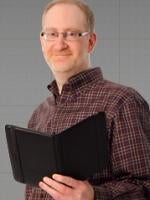|
This is the first of a three-part series discussing developments around Section 325(d). Part two will appear in our November 2017 newsletter and part three will appear in our December 2017 newsletter. Congress granted the Board broad discretionary power to deny institution of AIA proceedings under 35 U.S.C. §325(d) - denial is discretionary if Petitioner uses “the same or substantially the same prior art or arguments previously presented to the Office.” Though infrequently given as a reason for denial for the first few years following passage of the AIA, an expanded PTAB panel recently gave §325(d) sharper teeth against follow-on petitions.[i] More specifically, the expanded PTAB panel adopted a seven-factor analysis[ii] to determine whether a follow-on petition should be instituted. As illustrated in Figure 1 below, §325(d) has been cited in an increasing number of institution denials. What used to be a seemingly throwaway Patent Owner argument has been picking up steam and is becoming a viable, and even reliable, defense in the right circumstances. Given the rise of §325(d) as a reason for non-institution in the last year, it is becoming even more imperative to know how to select and use the best prior art at the outset. Yet our experience and research indicates that each PTAB panel (and each PTAB Judge) seems to apply a different threshold when determining whether to invoke their discretionary §325(d) power. So finding prior art that offers the greatest likelihood of success may be the most important decision to be made by Petitioners. But what prior art or arguments are (or are not) the same or substantially the same as those previously presented to the Office? The answer: it depends. Even though the Board can be unpredictable, some very fact-specific trends are developing that give us some insight on how a majority of PTAB panels may treat a certain prior art reference. For example, a Petitioner needs to ask itself:
Each of the questions presented above are inquiries that may sway the PTAB panel to invoke (or not invoke) its discretionary §325(d) power. While it can be difficult to predict with certainty how a PTAB panel might decide on a §325(d) issue, especially without knowing the specific panel members, SKGF has spent a considerable amount of time researching and studying these issues and identifying the trends as they develop. As noted at the outset, the next two issues of this newsletter will dive deeper into the issues described above. [i] General Plastic Industrial Co. Ltd. v. Canon Kabushiki Kaisha, IPR2016-01357 (PTAB September 6, 2017) (Paper 15). [ii] NVIDIA Corp. v. Samsung Elec. Co., Case IPR2016-00134 (PTAB May 4, 2016) (Paper 9). |
|
The Board Gives Section 325(d) Sharp Teeth
Wednesday, October 18, 2017
Current Public Notices
Published: 8 October, 2024
Published: 19 September, 2024
Published: 16 September, 2024
Published: 29 October, 2024
Published: 29 October, 2024
Current Legal Analysis
More from Sterne, Kessler, Goldstein & Fox P.L.L.C.
Upcoming Events
Nov
6
2024




 />i
/>i

